Published Apr 24, 2023
Star Trek: Deep Space Nine's Two-Part Turning Point
Revisiting how the duology 'Improbable Cause' and 'The Die is Cast' set the tone for the series' remaining four years.
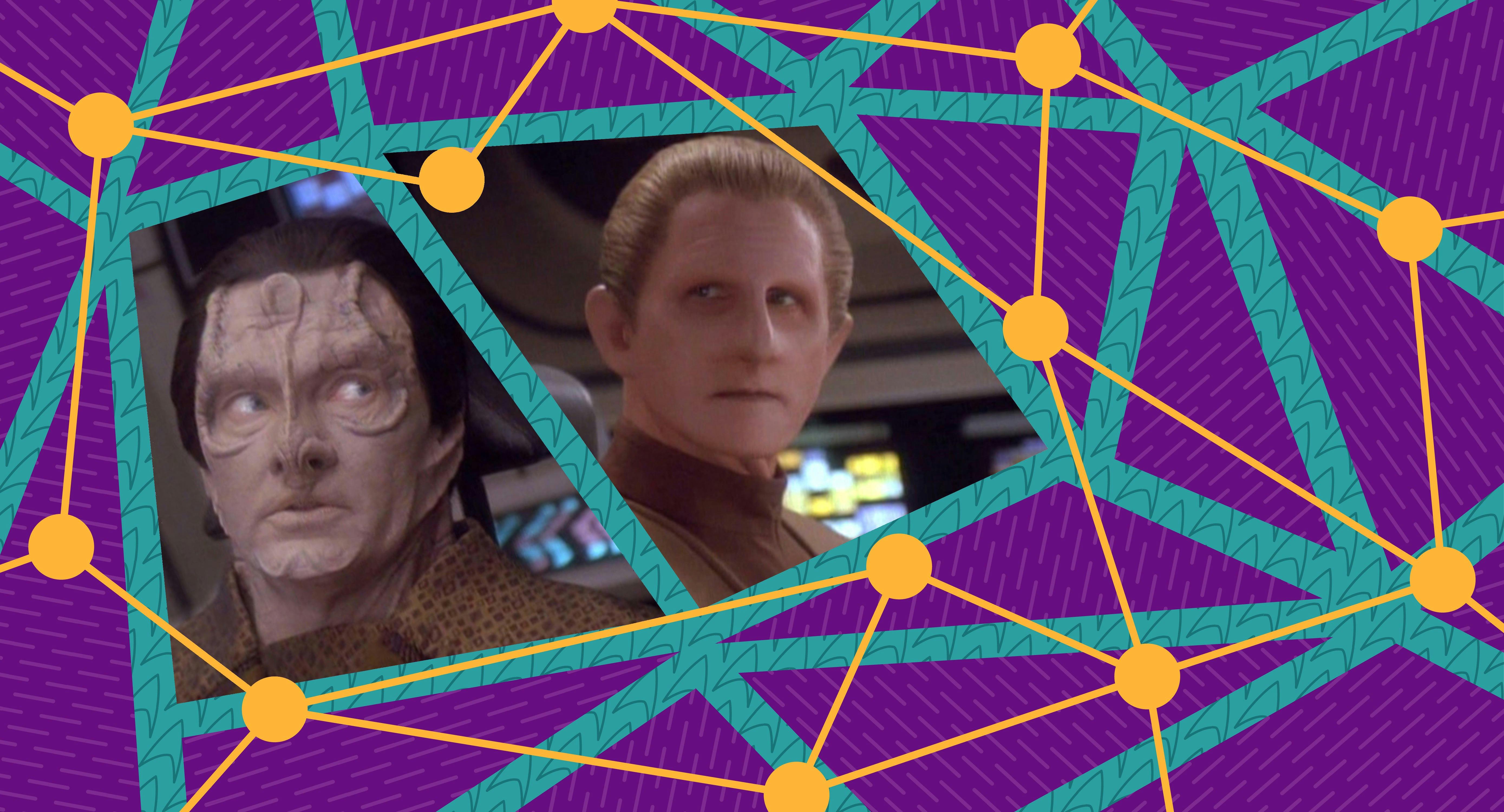
StarTrek.com
When one considers the plethora of intriguing two-parters and feature-length episodes in Star Trek history, titles such as "The Best of Both Worlds," "Redemption," "Past Tense," "The Way of the Warrior," "Year of Hell," and "Dark Frontier" tend to spring to mind first.
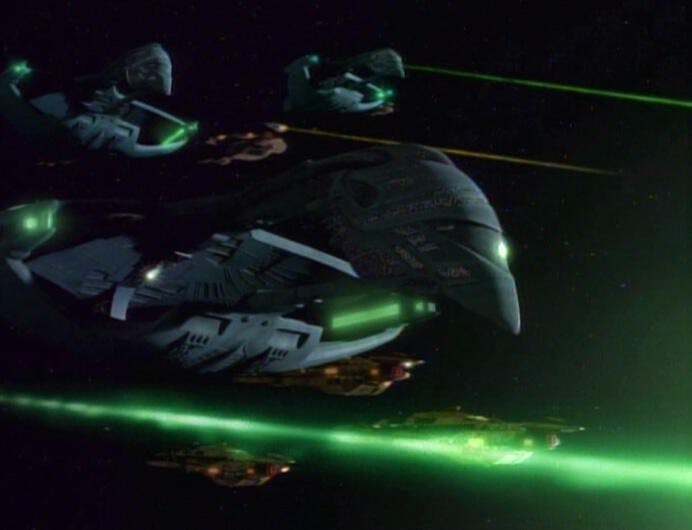
StarTrek.com
Often overlooked, the Star Trek: Deep Space Nine duology consisting of "Improbable Cause" and "The Die is Cast," with its phenomenal character exposition and intricate plot, merits a prominent position in Star Trek's pantheon of multi-episode arcs. Nestled late in the third season, the entries combined to serve as a pivotal turning point and set the tone for the show’s remaining four years.
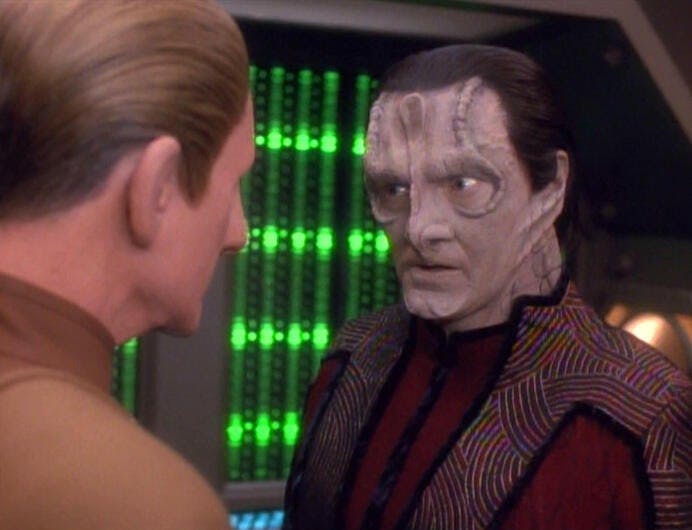
StarTrek.com
Following a bombing attempt on Elim Garak's life, Odo entrenched himself in an investigation to identity the suspected spy's attacker. Odo unearthed a Flaxian employed by the Romulans who held every intention to murder Elim, but the intrepid shapeshifter astutely deduced that the assassin's mission never came to fruition.
In typical Garak fashion, the culprit who placed the explosives turned out to be (spoiler alert)... Garak! The twisting trail, combined with the verbal sparring between the security officer and "victim," provided a revealing look into Garak's psyche, as the normally confident Cardassian spun the ornate web to enlist Odo's assistance. The unveiling of Elim's self-doubt set the stage for more disclosures about his actual persona.
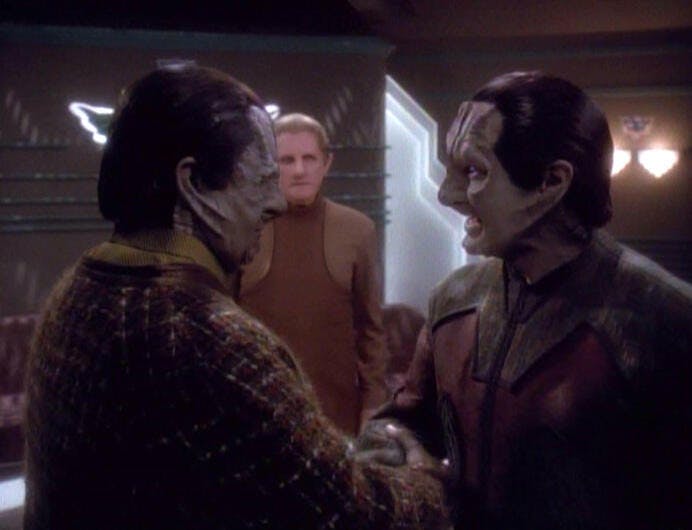
StarTrek.com
Garak and Odo set out to warn Enabran Tain about a potential plot against him, only to find Elim's former mentor comfortably commanding a cloaked Obsidian Order-Tal Shiar fleet from aboard a Romulan D'deridex-class warbird. Tain's presence further broke down Elim's lighthearted veneer, culminating in Garak's expression of genuine delight upon discovering the two intelligence agencies intended to launch a first strike on the Dominion.
No longer hiding behind his guise as a tradesman, Elim finally acknowledged Starfleet's suspicions about his past when he accepted Enabran's offer to join the mission in front of Odo. Despite years of denial and clever wordplay, the walls surrounding Garak's true nature crumbled at Tain's feet. The development reinforced Odo's belief that Garak felt emotionally attached to Enabran and exposed the tailor's hope of returning to prominence in the Obsidian Order.
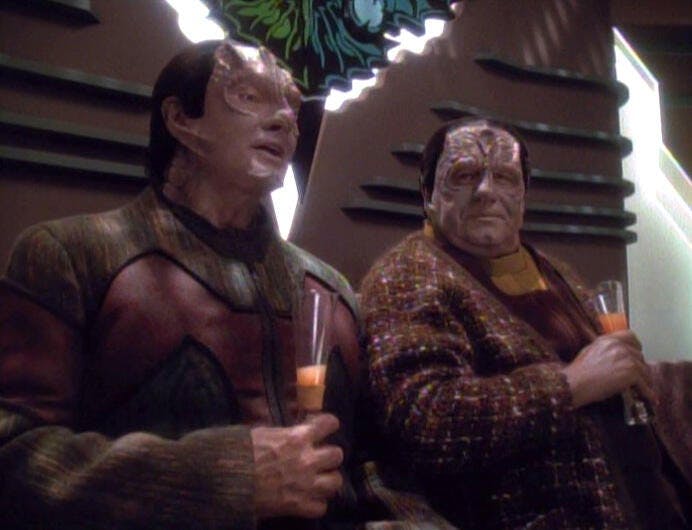
StarTrek.com
The task force, including 15 of the Keldon-class cruisers Thomas Riker uncovered during his excursion to Cardassian space in "Defiant," decloaked at Deep Space 9 and proceeded through the wormhole. After setting course for the Founders' homeworld in the Omarion Nebula, Tain and Garak reminisced over old glories. A discussion involving Elim's interrogation techniques prompted Enabran to order his protégé to press Odo for additional intelligence about the Founders.
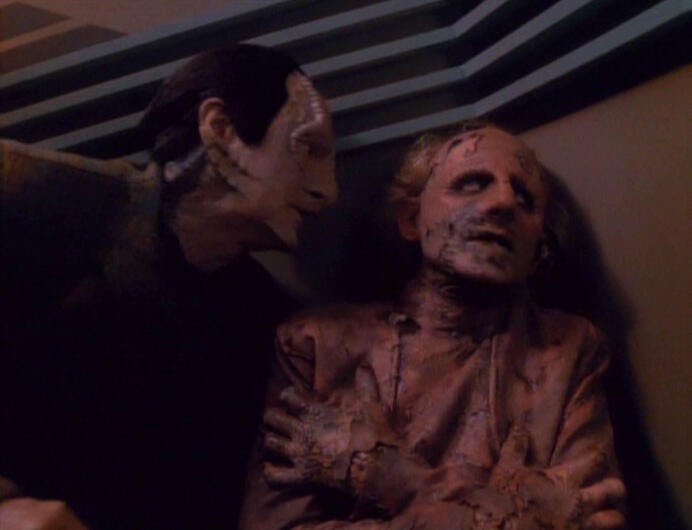
StarTrek.com
Garak's first attempt to prod Odo left Tain unsatisfied, leading to the use of an experimental device that prevented shapeshifters from changing forms. Unable to return to his liquid state, Odo suffered through a withering trauma and confessed that he desired to return home to his own people. While the shapeshifter felt distress, his critical words about Elim's character and motivations left unseen wounds on the spy.
Considering how quickly Garak rushed to turn off the quantum stasis field and end Odo's agony, perhaps the situation cracked the Cardassian more than it did the Changeling. Rather than driving a wedge between the Garak and Odo, the brutal experience initiated a surprising friendship between them. The aspiration to reside among one's people bonded them and eventually instigated their tradition of talking over breakfast on the station.
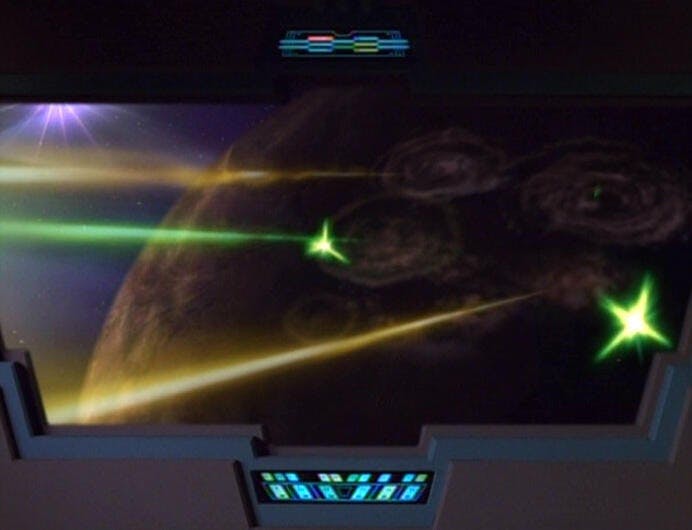
StarTrek.com
Back on the Bridge, the fleet's opening salvo devastated the Founders' homeworld. Sensors detected no change in Changeling life-signs on the planet, leading to the harrowing realization that an automated transponder broadcast false readings to the starships. A swarm of 150 Jem'Hadar fighters swooped out of hiding and pounced on the task force. Colonel Lovok, the Tal Shiar commander, divulged to Odo that the entire escapade had been manipulated by the Dominion to cripple the Cardassian and Romulan intelligence agencies after the Founders learned of Tain's plan. Lovok's casual remark that the Federation and Klingon Empire’s potential threat would soon be neutralized foreshadowed the Dominion engineering hostilities between Starfleet and the Klingons in 2372.
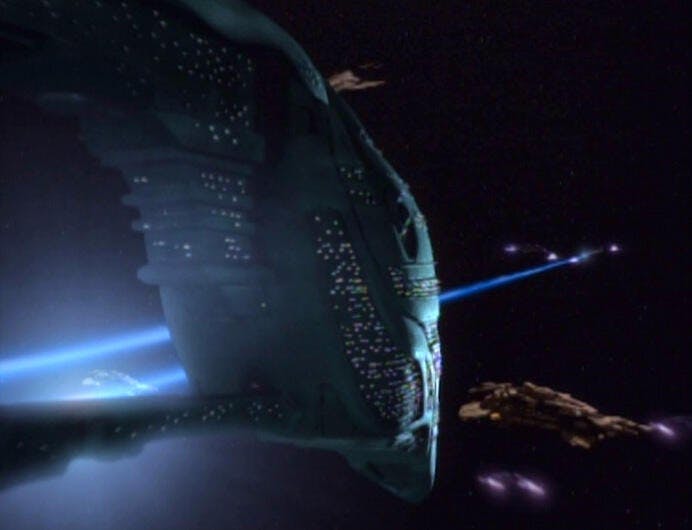
StarTrek.com
In fact, the defeat of their forces at the Battle of the Omarion Nebula weakened the Cardassian Union to the point that the Klingons felt comfortable invading their territory, the very action that incited the Federation to intercede on Cardassia's behalf.
Additionally, the Obsidian Order’s elimination made Cardassia vulnerable enough to accept Gul Dukat's leadership and Dominion membership in "By Inferno's Light." Romulan losses in the battle likely played a significant part in the Star Empire's decision to sign a nonaggression pact with the Dominion and avoid entangling itself in the Dominion War in 2373. The complex political interactions and struggles between the governments of the Alpha, Beta, and Gamma Quadrants from 2371 to 2375 linked back to the events at Omarion Nebula, as that encounter lit the fuse that led to years of conflict in the region.
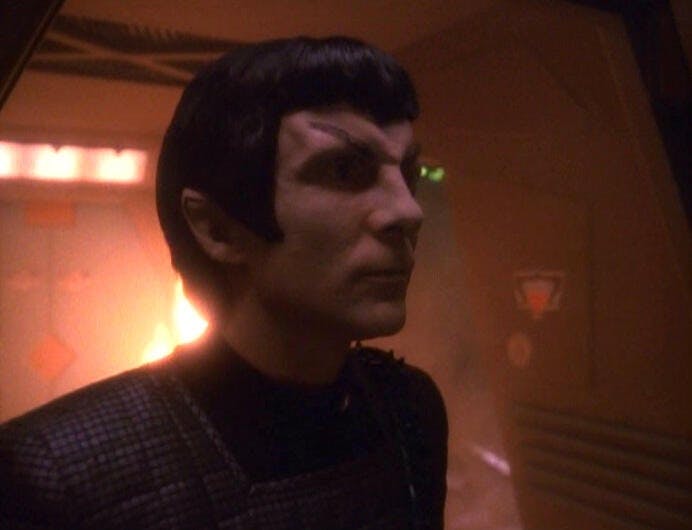
StarTrek.com
Similarly, the Founders' infiltration of the Tal Shiar caused Federation and Klingon citizens to fear similar imposters in their own ranks. The aforementioned Klingon-Cardassian War stemmed from Chancellor Gowron's concern that Cardassia's leadership consisted of Changeling imposters.
Starfleet endured its own Founder-related crisis in "Homefront" and "Paradise Lost," when Admiral Leyton nearly started a successful military coup following a Dominion bombing at the Antwerp Conference. Later seasons of Star Trek: Deep Space Nine consisted of intertwined story arcs, and many of those plots traced their roots to the Dominion ambush in the Omarion Nebula.

StarTrek.com
While Captain Sisko and the U.S.S. Defiant rescued Elim and Odo, Enabran refused to abandon ship. The unexpected loyalty shared by Garak and Tain established a connection further explored in "In Purgatory's Shadow," when Elim finally explained that Enabran fathered him. The emotionally draining conversations with Odo and Tain laid bare Garak's weaknesses, providing the audience with a greater understanding of the Cardassian.
The events depicted in "Improbable Cause" and "The Die is Cast" etched themselves into the fabric of Deep Space Nine by intensifying the heat of Starfleet's lingering cold war with the Dominion and directly impacting the future Klingon-Cardassian, Klingon-Federation, and Federation-Dominion clashes. The destruction of the Obsidian Order and Tal Shiar shifted the Alpha Quadrant’s balance of power and stoked concerns over Changeling infiltrators, ushering in an era of uncertainty and apprehension. On a more personal level, Garak's coy winks about his espionage exploits transitioned into an open acknowledgment of his deeds. While not mentioned as often as other Star Trek two-parters, this duology irrevocably altered the trajectories of Deep Space Nine's characters and overarching plot.
This article was originally published on March 10, 2018.
Jay Stobie (he/him) is a freelance writer and consultant who has contributed articles to StarTrek.com, Star Trek Explorer, and Star Trek Magazine, as well as to Star Wars Insider and StarWars.com. Jay can be found on Twitter and Instagram at @StobiesGalaxy.
Stay tuned to StarTrek.com for more details! And be sure to follow @StarTrek on Facebook, Twitter, and Instagram.

